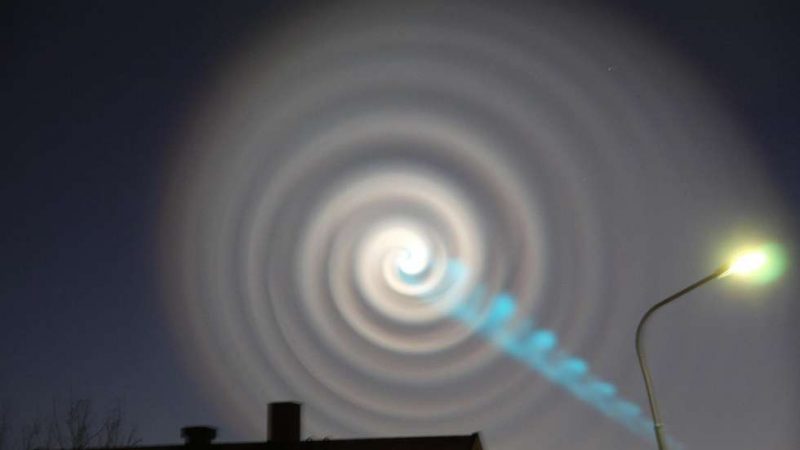Is That A UFO?! There’s Probably An Explanation

If an alien spaceship were to appear in Earth’s sky, it’s likely it’d be seen first by those who spend a lot of time gazing upwards: astronomers. But professional and amateur astronomers don’t usually observe any Unidentified Flying Objects (UFOs). Because they know what sorts of objects appear in both the daytime and nighttime sky, they’re able to identify most sightings fairly quickly, no matter how strange they may appear. On the other hand, members of the general public do report UFOs. During the Covid-19 pandemic of 2020, for example, there’s been an increase in perceived UFO sightings in many countries. Many have been attributed to most people’s relative inexperience with interpreting cell phone camera shots. Lens flares – internal reflections within the camera – are often the culprit. In 2020, the bump-up in UFO reports is also an indication that people have had more time to observe the sky. That’s a trend we hope continues.
EarthSky 2021 lunar calendars now available! They make great gifts. Order now. Going fast!
For your reference, here’s a list of sky objects people frequently mistake for UFOs.
Flash in the sky: Rocket lights up South Florida. Did you see it? https://t.co/ImFT6wkT4X pic.twitter.com/otiFVPqYUZ
— Miami Herald (@MiamiHerald) September 2, 2015
Rocket launches. On the morning of September 2, 2015, many people in Miami, Florida, looked up to catch a glimpse of the strange moving light seen above. Some labeled it as a UFO when posting photos to Twitter or Facebook, but others knew it was an Atlas V rocket launched from Cape Canaveral.
Some observers have seen a slow-moving object displaying a strange single or double trail, which may even change its appearance over the moments you observe it. This can occur if an observer is fortunate enough to see a spacecraft just after being launched; you may be seeing one rocket stage separating from another, or the ignition of a new stage.
Take a look at the video below. This is a SpaceEx Falcon 9 launch in December 2017 from Vandenberg Air Force Base, as seen from Los Angeles, California.
Used rocket bodies – tumbling objects orbiting our planet – also produce flashes in our night sky. After launching a satellite, most rocket bodies continue to orbit Earth for weeks, months or even years. As a rocket body tumbles in orbit, it may be visible as a dim moving “star” that might produce bright flashes as various sides of the tumbling object are exposed to sunlight.
An interesting sighting of this kind is a flash that appears to come from a static point in the sky. How is this possible? Geosynchronous satellites need to be placed in a very high orbit, some 22,200 miles (35,727 km) above Earth’s surface. After the launch of this sort of satellite, the rocket body that carried the satellite to orbit will also remain orbiting our planet. Instead of having a circular orbit it will have a highly elliptical (elongated) orbit. It might produce some peculiar flashes, which might be visible from Earth. How does it happen? Depending on the location and perspective of the observer, the erratic flashes of the rocket body from a geosynchronous satellite might appear to originate from an apparent static place in the sky. This rare occurrence is possible if the reflecting rocket body is more or less moving towards, or more or less departing, Earth as it pursues its stretched-out (elliptical) orbit. This is the same principle that occurs when a distant airplane appears to be static as it moves towards you. To the unaided eye, the subsequent flashes may give the impression that they are originating from the same area of the sky. If you are fortunate enough to witness this kind of flash in the sky, grab your binoculars! Magnification may confirm that the object is indeed moving slightly instead of remaining static.
Jellyfish-shaped translucent balloon against a blue sky.
An apparent static bright dot that was visible in daylight, was later confirmed to be a globe. A view using a telescope revealed it was this balloon from Google’s Project Loon. Image via Eddie Irizarry.
Atmospheric balloons. Some observers reporting UFOs describe:
… an apparent planet or stationary bright object seen in broad daylight.
Large, round objects in the sky can be strange-looking. They may not appear to be moving. Different types of balloons and globes are being launched by various groups trying to do various things – for example, study Earth’s weather or atmosphere – and although these objects are slowly drifting on the wind, their distance from an observer might cause them to appear stationary in the sky. An example is Google’s Loon program. Loon has launched a network of globes to test internet coverage with the goal of providing access to remote areas. They can gain an altitude of 60,000 feet (18,300 meters) or twice as high as commercial aircraft. Those balloons are reflective, and they appear bright in the sky. They can cause reports of UFO sightings.
Night sky with short bright streak larger in the middle.
Vince Babkirk captured this flare from an iridium satellite on July 22, 2016. He wrote: “There were lots of fast moving clouds tonight, but the Iridium 59 satellite was supposed to appear … [the clouds] parted just in time for me to capture the flare.” Read more about iridium flare satellites.
Earth-orbiting satellites. Satellites are easily visible to the unaided eye one or two hours before sunrise and after sunset. We see them then because their high-altitude orbits let them receive and reflect sunlight, even if it is dark at the observer’s site. Satellites generally appear as slow-moving “stars” that may disappear as they pass into Earth’s shadow. Some satellites, including the Hubble Space Telescope, sometimes reflect sunlight in an optimum way for a brief time, causing a bright flash or flare. Iridium satellites, which provide cellular communications to remote areas, formerly had reflective antennas that produced very intense flashes as bright as -8 magnitude! That’s much brighter than the brightest planet, Venus. It’s bright that it appeared as a huge spotlight from up there for one or two seconds. Newer Iridium satellites do not have this property.
Satellites traveling in groups have also been known to cause a stir, and we can likely expect an increase in reports when the Starlink satellite network becomes even more noticeable. Below is a video of a train of them passing by, captured by Marco Langbroek in the Netherlands in 2019:



 Creators of mankind
Creators of mankind Description of “Tall white aliens”
Description of “Tall white aliens” Where they came from?
Where they came from? About hostile civilizations
About hostile civilizations The war for the Earth
The war for the Earth “Tall white aliens” about eternal life
“Tall white aliens” about eternal life Video: “Nordic aliens”
Video: “Nordic aliens” Aliens
Aliens Alien encounters
Alien encounters The aliens base
The aliens base UFO
UFO Technology UFO
Technology UFO Underground civilization
Underground civilization Ancient alien artifacts
Ancient alien artifacts Military and UFO
Military and UFO Mysteries and hypotheses
Mysteries and hypotheses Scientific facts
Scientific facts


















